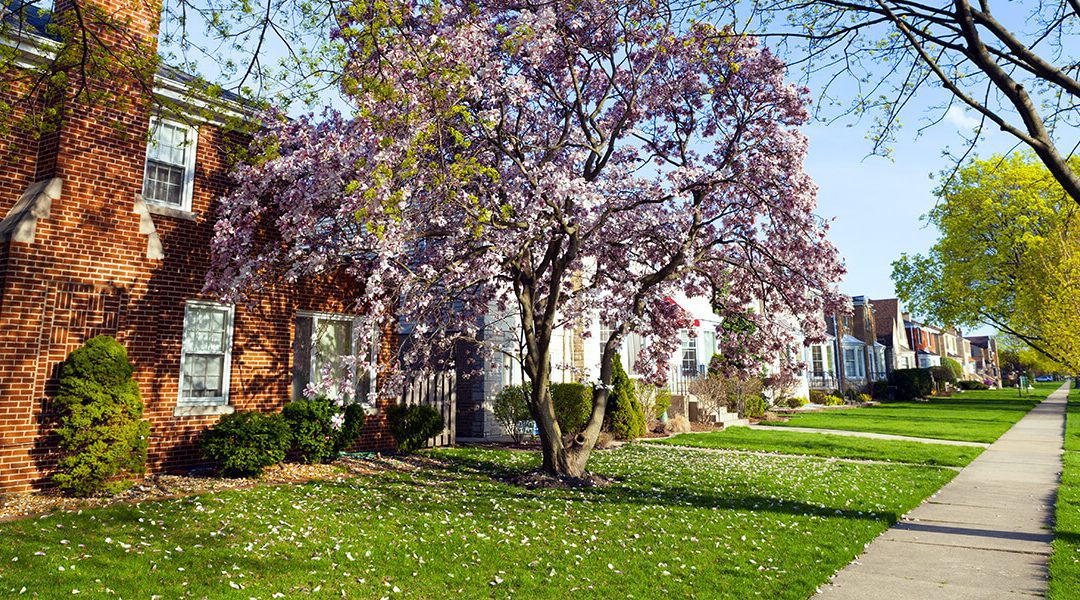The word lawn comes from the Middle English word launde, which meant a clearing in a woodland. It referred to those peaceful and serene meadows that you may encounter when hiking through a forest. They’re ideal places to build a cabin, and it’s no surprise that we grow them around our houses today. Ideally, our lawns should have the beauty of a woodland meadow. And when we learn how to fix common lawn problems, they certainly can!
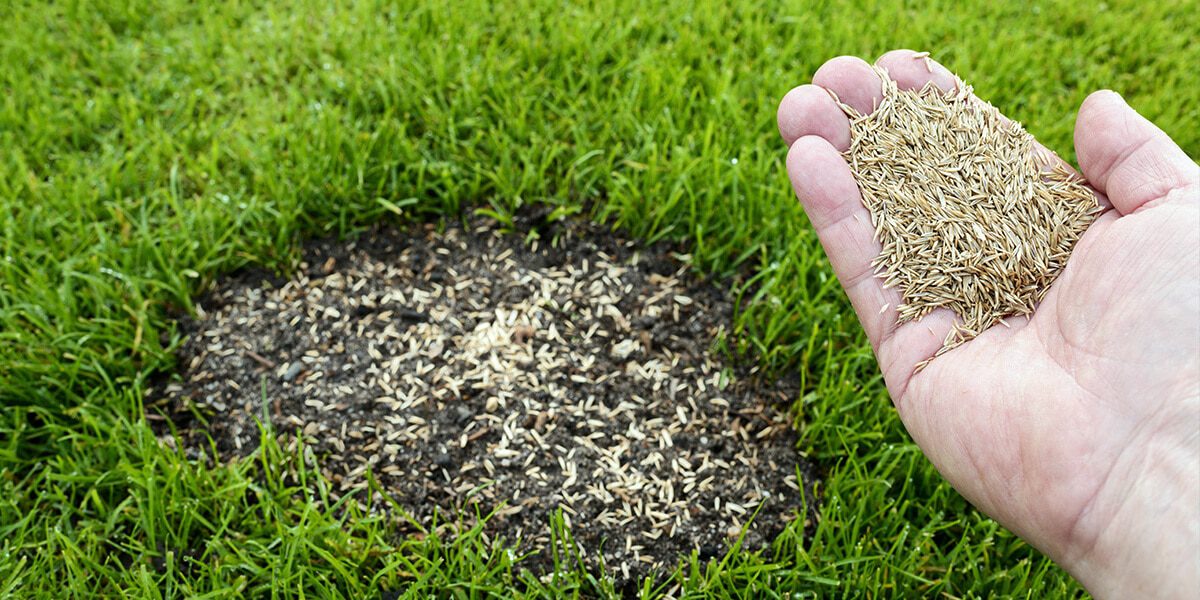
How to Fix Sunken Areas
A sunken area in your yard can be unattractive, hard to mow, and a tripping hazard. It may be caused by an ongoing drainage or irrigation problem in your lawn that you need to address. Or it may be due to another cause, such as the removal of an old stump, an animal’s abandoned burrow, or simply uneven earth. Not sure how to fix it? Here are two do-it-yourself ways to resolve this common lawn problem:
1. The Topsoil Method: Spread topsoil over the problem area in a layer thin enough that the lawn below is poking through. Leave the topsoil in place, letting the grass below grow through it. Once the soil is no longer visible, add another thin layer. Repeat the process until the ground is level with the surrounding lawn. It may take 2-3 months.
2. The Topsoil and Grass Seed Method: For a faster method, spread topsoil into the problem area until it’s level with the surrounding lawn, tamping it down with your foot as you go. Once it’s level, gently rake the topmost layer of soil to loosen it and apply a generous spread of grass seed. Then, gently rake the grass seed into the soil. Now all you need to do is water, but it’s important to water frequently—about 3-4 times per day or enough to keep the seeds consistently damp—while the grass is germinating. Set your sprinkler on a timer if necessary.
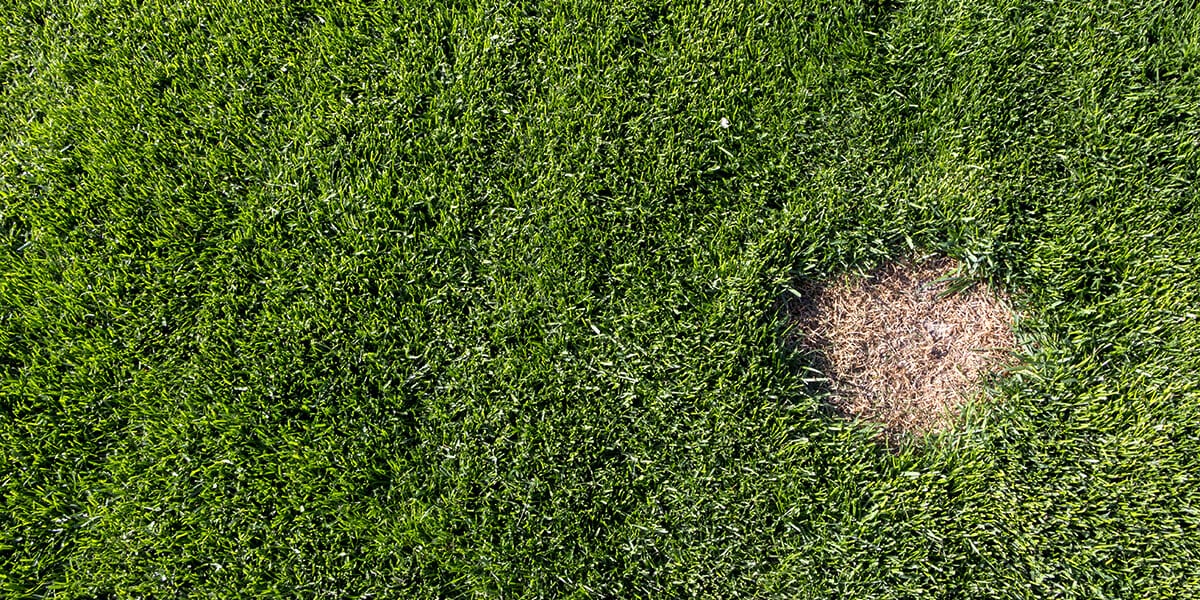
No matter what problem you’re facing in your lawn, adding starter fertilizer, aerating, and overseeding are often three ways to fix it.
How to Fix Patches of Dead Grass
A dead patch in the lawn may have many causes, such as a pest problem, fungi, nutrient deficiency, lack of water, or overly compacted soil. In addition to being a bit of an eyesore, dead patches make your lawn vulnerable to pesky weeds like creeping Charlie. It may be hard to determine the cause, but no matter what is causing it, a dead patch can usually be fixed with aeration, compost, and overseeding:
1. Aeration: Aerating creates holes in the problem area, which allow air, water, and nutrients to reach the lawn’s roots. At the same time, it gives the roots room to expand, reducing the compaction in that area.
2. Fertilizer: Applying fertilizer that does not contain halts (which can prevent your seed from germinating) over the dead patch adds nutrients to the lawn and helps the grass grow back.
3. Overseed: Once you’ve aerated and added fertilizer, overseed the area with grass seeds. Apply a generous layer and gently rake them into the soil. Make sure you water 3-4 times daily as the seeds are germinating (5-7 days), and then reduce your watering to twice daily for 2-3 weeks.
If your dead patch doesn’t come back to life with aeration, fertilizer, overseeding, and watering, then you may need to consult a lawn care expert for advice on the problem.
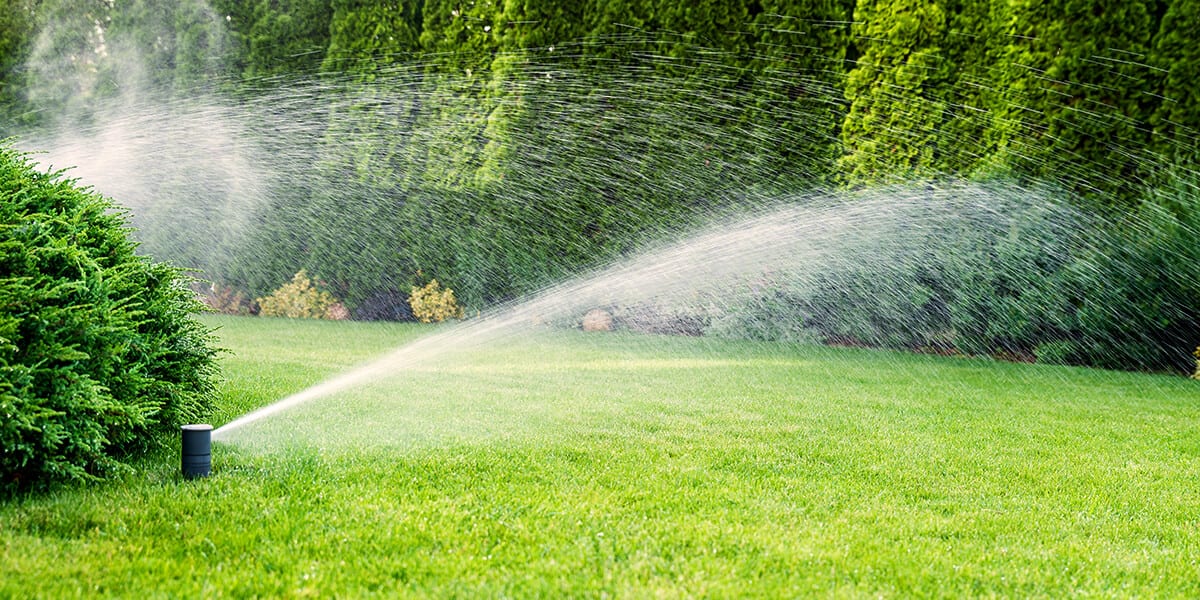
How to Fix Grass Suffering from Heavy Shade
Heavy shade is another common problem for a healthy lawn. We’ve all seen patches of sparse or dying grass beneath big trees, between houses, or in the dark corner of a yard. How to fix it? Besides pruning the surrounding trees, it may seem that there’s little we can do. But fortunately, pruning is only one of many remedies to this common lawn problem:
1. Prune: If a tree or bush nearby is shading your lawn, sometimes you can prune back the problem branches, thin the canopy, or thin lower branches to let more sunlight through.
2. Plant Shade Tolerant Grass: If you can’t get more sunlight to the problem area, you can seed another kind of grass into the lawn. Fine fescue is one shade-tolerant grass that grows well in northern Illinois.
3. Give the Right Amount of Water: Grass in shady areas doesn’t need as much water as other parts of your lawn. Too much water may encourage fungi to stifle lawn growth in the problem areas.
4. Let it Grow Higher: To give your grass a better chance of surviving in shady areas, let it grow a bit higher before mowing, or switch your mower to a higher setting when you come to the shady spot. Longer grass has more surface area to absorb sunlight through photosynthesis.
5. Alternatives to Grass: If you still can’t solve the lawn problem in your shady area, you can easily do something else with that spot, like growing shade-tolerant groundcover, making a garden with shade-tolerant plants, or using it for a pathway, a compost bin, or a seating nook.
No matter what problem you’re facing in your lawn, adding starter fertilizer, aerating, and overseeding are often three ways to fix it. Remember to keep the seeds damp as they’re germinating and have a consistent watering routine—two times daily—for 2-3 weeks as the new grass gets established.
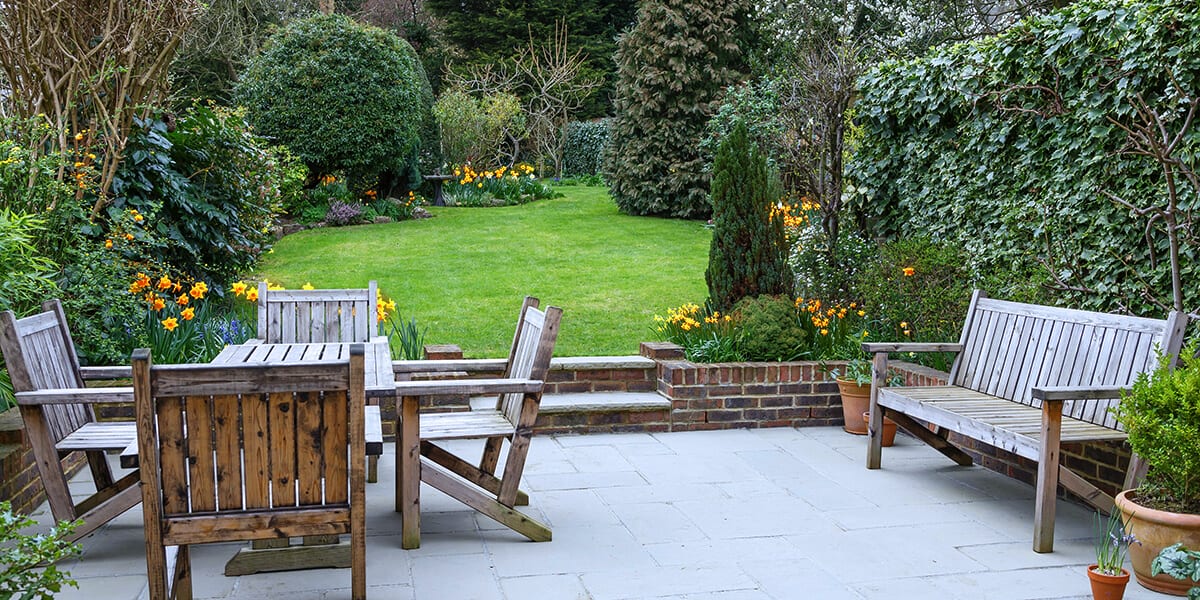
How to Fix Worn or Damaged Hardscapes
A patio, pathway, or driveway is as much a part of your yard as your lawn, and these surfaces encounter occasional problems as well. Replacing damaged pavers, power washing, and resealing are a few do-it-yourself ways to keep your hardscapes looking fresh:
1. Replace Damaged Pavers: If you’re up to the task, you can replace cracked pavers or remove and re-level sunken pavers yourself.
2. Power Wash It: Wondering how to fix a worn-out patio? One trick is simply to wash it. Often, the surface is not worn at all but merely covered in grit and grime.
3. Reseal It: Once the surface is sparkling clean, resealing your patio brings out the true color and protects it from further weathering. A hardscape can be resealed every 3-5 years.
4. Embrace Imperfections: Take a lesson from the Japanese philosophy of Wabi-Sabi and embrace imperfections. The idea is to accept and appreciate the beauty in what appears to be “flawed,” like cracked ceramics. From this angle, we can appreciate the minor cracks and blemishes in our surfaces because they remind us of the imperfections of life itself and for the unique character they bring to our yard.
Once you know how to fix common yard problems yourself, you’ll be on your way to a lush and healthy lawn—and one step closer to growing that serene and peaceful meadow we all long for!
Additional Information:
A Guide to Spring Lawn Care
All About Garden Pathways
Platt Hill Nursery is Chicago’s premier garden center and nursery.

